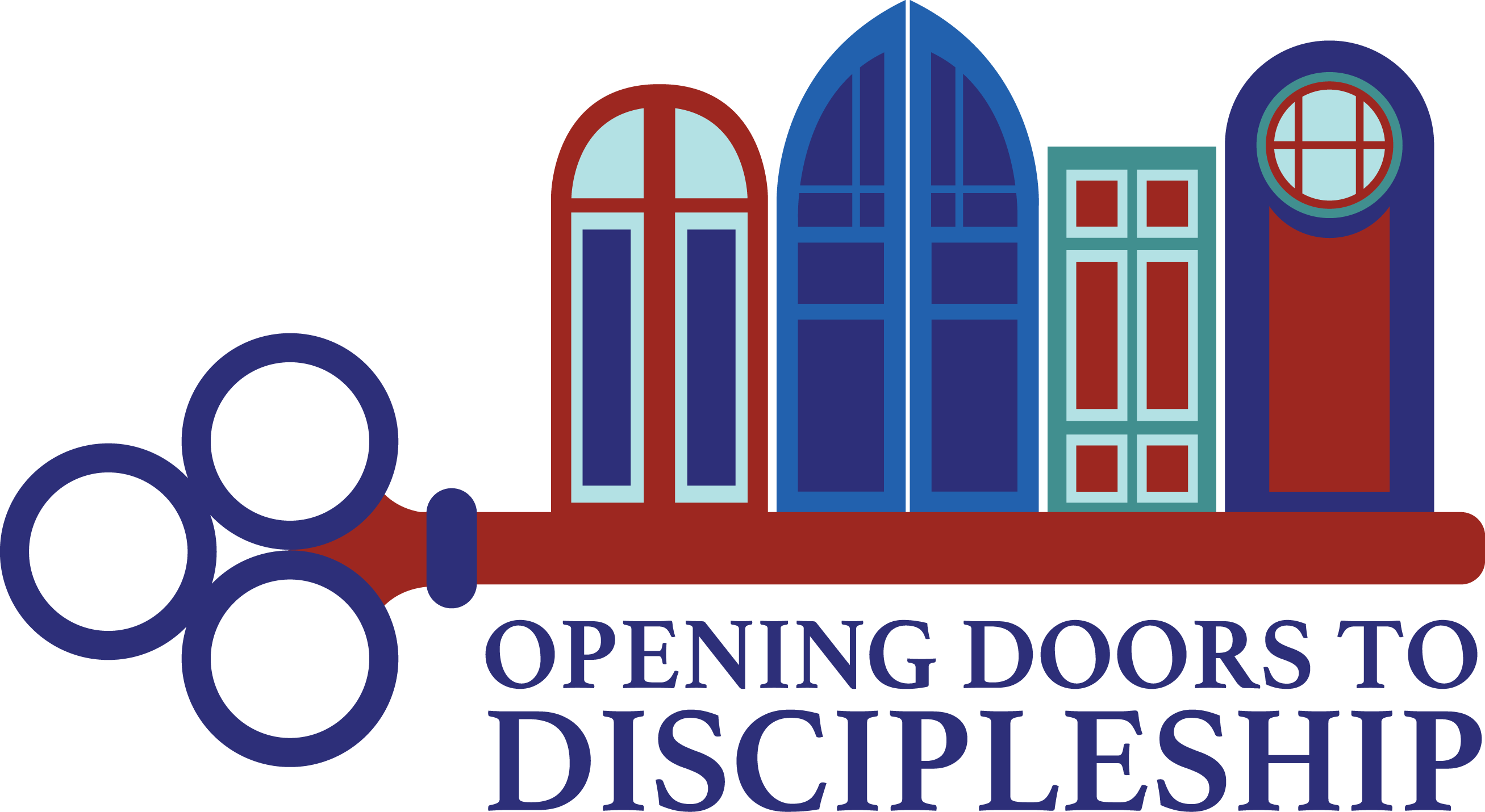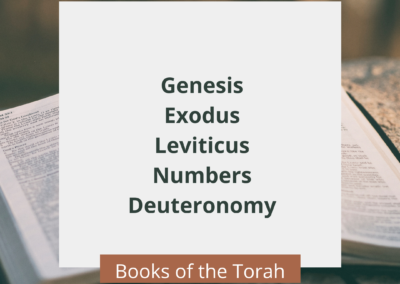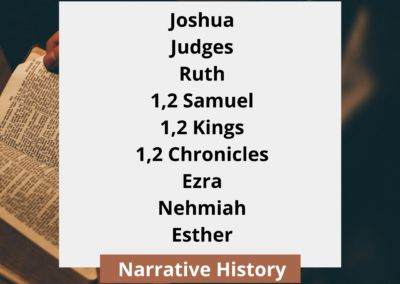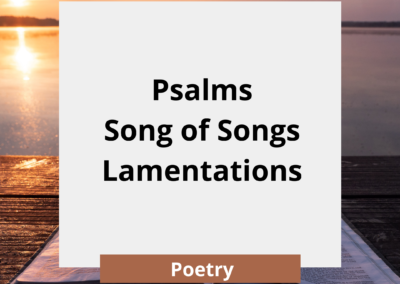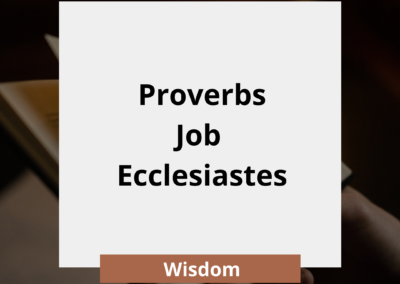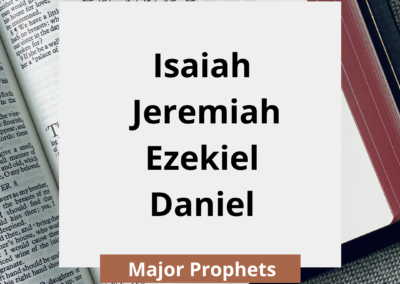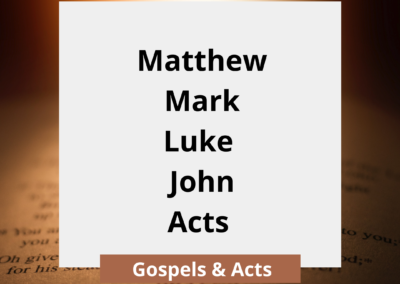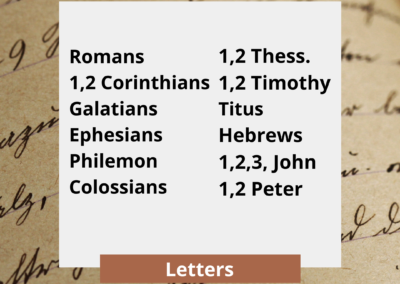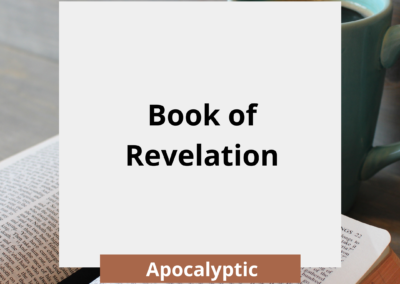Engaging this module
You are invited to explore this module by reading the content, watching the presentations and videos and responding to the suggested exercises and activities. You are encouraged to have a Bible and journaling materials nearby to take notes.
What is the
Bible?
The Bible reveals to us the truth about God and God’s Son Jesus Christ.
Although the writings of the church offer us interpretations of God’s word, we believe when interpretations conflicts with the Bible we base our faith on scripture alone.
We are encouraged to study all these writings, from Genesis to Revelation, to inform our own lives and ministries. However, looking for an answer by a single verse, or reading our own beliefs into the text (eisegesis), is discouraged. Over the centuries the Holy Spirit has empowered us to re-interpret the Bible for the current age.
The Bible is not an idol to be worshipped. It is a source of wisdom, faith, and insight into how we are to live in Christ, as individuals and as the church. This holy book is one with which we wrestle our whole lives.
Let’s start by taking this quick quiz and engaging in 2 questions.
QUIZ “IS THIS SCRIPTURE”?
WRITTEN QUESTIONS
- How would you describe the Bible’s importance in your life?
- What makes you open the Bible?
WHAT DOES THE BIBLE MEAN TO YOU?
Watch this video to hear other Christian Educators and faith formation leaders describe what the Bible means to them.
This presentation will introduce you to the Bible as it is understood in the Reformed tradition. If you would like to read along with the presentation, please click on the button below to download the transcript.
THE BIBLE IN HISTORY
The Bible is a compilation or anthology of books recounting the stories, history, song, prayer, and practices of people responding to God’s call.
As a book of books, the Bible contains many genres of writing. A literary genre is a category of writing that is distinguishable from other writings by style, tone, content, format, flow, and technique. Genres fall into two main categories: poetry or prose. In the Bible, some books are primarily one genre; however, even within these books one can find examples of other genres.
You are invited to watch this video from the Bible Project, which provides an overview of what is in the Bible.
You may also want to read this article from Bible Odyssey, which explains how the Bible was formed.
Choose a literary genre from the Bible that interests you and click on one of the tiles below to explore the genre.
QUESTIONS TO PONDER
- How do you view the Bible as a finished product?
- What do you know about how the Bible came to be in its current form?
This presentation will introduce you to the relationship between the Church and the Bible. If you would like to read along with the presentation, please click on the button below to download the transcript.
REFLECTION
“O Word of God Incarnate” William W. How 1867
-
- O Word of God incarnate,
O Wisdom from on high,
O Truth unchanged, unchanging,
O Light of our dark sky:
We praise You for the radiance
That from the hallowed page,
A lantern to our footsteps,
Shines on from age to age. - The church from You, our Savior,
Received the gift divine,
And still that light is lifted
O’er all the earth to shine.
It is the sacred vessel
Where gems of truth are stored;
It is the heav’n-drawn picture
Of Christ, the living Word. - The Scripture is a banner
Before God’s host unfurled;
It is a shining beacon
Above the darkling world.
It is the chart and compass
That, all life’s voyage through,
’Mid mists and rocks and quicksands,
Still guides, O Christ, to You. - Oh, make your church, dear Savior,
A lamp of purest gold,
To bear before the nations
Your true light as of old.
Oh, teach your wand’ring pilgrims
By this their path to trace,
Till, clouds and darkness ended,
They see You face to face.
- O Word of God incarnate,
- What images of Christ in the hymn fill out your understanding of him as The Word of God?
- Prayers for Illumination: Before reading the Bible, offer a prayer for illumination. Using the same prayer will enable memorization and signal a time to be still, focus, and listen carefully. Here are some suggestions.Feel free to write your own or edit these.
- For preschoolers and children: Thank you, O God, for the Bible. Help us to listen carefully and to understand the story. We pray in Jesus’ name, Amen.
- Teens: Almighty God, enable these ancient words to become relevant to us and offer direction for our lives. This we pray in Jesus’ name, Amen.
- Adults, or for yourself: Holy Spirit, silence the many voices in my head and make me attentive only to yours, so that the biblical words might become a new voice for me to follow. In Jesus’ name I pray, Amen
OR
Holy God, open to me the words I am about to read. May they be a blessing this day. In Jesus’ name I pray, Amen.
THE BIBLE IN ACTION
-
- What is your first memory of experiencing scripture in a faith formation setting? What made it memorable? If you recall, what was the scripture?
- Brainstorm a list of scripture texts you think everyone must experience, remember, and use as a guide to see God at work and live a life of faith.
- How do you study scripture to prepare to teach?
- When you are selecting or creating curriculum, what role does scripture play? Do you select scripture first and then seek a curriculum that works or write your own? Do you examine at how scripture is used and taught?
- When you think about teaching scripture, what practices come to mind? What role does the learner play in engaging scripture?
How we use, select, and engage scripture in our faith formation ministries also teaches something about how we understand scripture’s use, who is valued, and who is welcome to hear and interpret the message of God’s love in scripture. This section will focus on how we use scripture in faith formation ministries in the classroom, with small groups, engaging children in worship, and in the worship life of the community for prayers, proclamation, and liturgy. This section presupposes faith formation leaders have personal practices for regular devotional study of scripture. (Resources for experiencing scripture in regular devotion are included). We will explore two important ways to engage the Bible in our faith formation practices and reflect on how we use the Bible.
-
- Engaging the scripture for teaching and spiritual formation
- Selecting scripture for use in teaching and spiritual formation
The Presbyterian Church USA describes its practices of using and understanding scripture in its Confession of 1967:
9.29 The Bible is to be interpreted in the light of its witness to God’s work of reconciliation in Christ. The Scriptures, given under the guidance of the Holy Spirit, are nevertheless words of human beings, conditioned by the language, thought forms, and literary fashions of the places and times at which they were written. They reflect views of life, history, and the cosmos which were then current. The church, therefore, has an obligation to approach the Scriptures with literary and historical understanding. As God has spoken the divine word in diverse cultural situations, the church is confident that God will continue to speak through the Scriptures in a changing world and in every form of human culture.
Preparing to teach scripture may include practices that differ from personal devotional practices; however, both study for teaching and devotional practices inform our understanding of scripture, and where we see God at work in our lives. As educators, it is our responsibility to deepen our understanding of scripture and our walk with God. We grow our understanding of scripture by engaging diverse translations of the text; using a variety of study resources; and seeking answers to questions that engage the text in its historical setting, literary genre, and history of interpretation. We want to answer the question, “What is God saying to us in this text today?” Preparing to use a text for educational ministry includes discerning the meaning of the text. The Reformed tradition affirms the Holy Spirit is the center of our discernment practices; we are to use all available interpretive tools and practices, and we acknowledge that lived experience also impacts the meaning of the text.
You are invited to explore different practices for engaging scripture you plan to use in faith formation settings. Please click on whatever tile interests you.
What is Exegesis?
The term for this process is exegesis. Exegesis is the practice of drawing the meaning out of the text using tools for analysis, an awareness of your faith community, and reliance on the Holy Spirit. It is different from Eisegesis which means applying a meaning to a text. Eisegesis assumes a text has a fixed meaning throughout time and for all audiences. Eisegesis is proof-texting — using a biblical text to support one’s point of view. Instead, the Reformed tradition affirms practices of study that first, understand that God is speaking throughout the scriptures in new ways even in familiar passages, and second, claim scripture is interpreted in light of the whole of scripture, the witness of Jesus, and the command to love God, love neighbor, and love self.
Scripture study includes considering the following contexts of the writing: The historical/literary landscape that gave rise to the text, the text’s location within scripture, and the teaching context/current audience.
Resources for Scripture Study
As the leader of faith formation ministry in a faith community, basic resources for scripture study are key. Here are resources we recommend all faith formation leaders have access to: A Study Bible and Bible Dictionary. The best available recommendations are below along with additional texts.
Study Bible
-
- New Oxford Annotated Study Bible (NRSV)
- HarperCollins Study Bible (NRSV)
- Common English Bible Study Bible
- The Access Bible: An Ecumenical Resource for People of Faith – NRSV
Bible Dictionary
-
- Harper’s Bible Dictionary
Introductory texts
-
- Harper’s Bible Commentary
- The Bible from Scratch: The New Testament for Beginners; The Bible from Scratch: The Old Testament for Beginners (both by Donald L. Griggs)
Sources for online scripture
-
- Oremus
- Bible Gateway
- Bible Odyssey.org
Recommended translations
-
- NRSV
- Common English Bible
- RSV
- The Message (useful for devotional study, helpful for jarring us to hear the scripture in new ways when we get stuck)
Using and selecting scripture with children:
-
- I Wonder, Elizabeth Caldwell
Recommended children’s Bibles
-
- Growing in God’s Love: A Story Bible by Elizabeth F. Caldwell (Author), Carol A. Wehrheim (Author)
- Spark Story Bible by Patti Thisted Arthur (Author)
- Shine on (Shine: Living in God’s Light), Herald Press Publishers
Children of God Storybook Bible by Archbishop Desmond Tutu
Children’s book to read and discuss bible and theology:
-
- Blindmen and the Elephant
- Seven Blind Mice by Ed Young
In addition, we recommend that leaders also have access to commentaries and maps. Acknowledging these are costly, here are some suggestions for where to borrow and share resources:
- Your denomination’s or another denomination’s regional resource center
- Nearby college or seminary libraries (often have membership options)
- The church library or a neighboring congregation’s church library
- Pastoral leaders church library
Basics of Exegesis
Pray
-
- Pray for the illumination of the Holy Spirit
- Engage in a prayerful reading of the scripture passage (lectio divina as an example) (Need link to online practice)
- Read the scripture in more than one translation (NRSV, CEB, etc.)
Scripture in its historical and literary context
-
- Who was this passage written for (historical audience)? Who was this passage describing? What particular issues were these communities facing? What type of community was it? How did they relate to others around them?
- Who are the characters in this story?
- What genre is this writing? Does that tell us something about how to interpret it?
- Where does this story take place (geography)?
- What is the author of this text trying to say to that community?
Scripture in its canonical context
-
- How does this passage relate to the book it is located in? How does this passage connect to other scripture passages in the same testament? Or of the same genre? Does this passage or its themes get repeated somewhere else in scripture?
Teaching context
-
- Where does this story connect with your learners’, your faith community, and the larger world? Where does it challenge you, the learners, the community, and the larger world?
Larger context
-
- How have others interpreted this text?
Focusing for faith formation
-
- After prayerful study and reflection, what are you led to focus on? Where does that connect with written materials already provided such as liturgy, lesson plans, or curriculum?
Selecting Bible Translations
Most engaging the scriptures are not fluent in their original languages. Therefore, we rely on translations of the scriptures for our devotion, study, and teaching. The goal of translation is to get the most accurate representation of the original language and thoughts in our current language. Yet, as soon as one translates one also begins the act of interpreting. Therefore, as faith formation leaders, we must select scripture translations with care. When selecting scripture verses, they must connect to the larger passages around them. If you find you are selecting verses that lose some of their meaning when pulled out of the larger book, you may need to lengthen the passage you have selected.
Not all translations of the scripture are the same when it comes to studying and preparing to use scripture in faith formation. It is imperative that, as the leader of faith formation ministry, you use the best available translations of the biblical text for teaching. There are at least two types: paraphrases or translations. In a paraphrase, the author(s) of those versions write the Bible in their own words. They are concerned with readability over translating the words from the original language as closely as possible into the language of readers today. Translations seek to put into the language of the readers, as accurately as possible, the language of the earliest available texts in a way that is readable to modern readers.
These translations are strongly encouraged for use in studying the scripture:
- New Revised Standard Version (NRSV)
- Revised Standard Version (RSV)
- Common English Bible (CEB)
Paraphrase: The Message, New International Version (NIV)
Who translated, what texts, what goals
As you are researching the Bible, take time to find out about the process used and texts selected for translation. Take time to go to the website of a particular version of scripture, or look in the early pages of the Bible, to see if they list translation principles, texts used, and translation process, including those who were invited to translate and advise on translations. The goal is that translators use the best early texts available for translation. A second goal is to see translators who represent the diversity of the church (gender, race, creed, ability, sexuality, etc.). To read more about one translation’s process go to: Common English Bible here.
Selecting Scripture Length
In preparing to use scripture in faith formation activities, it is important to make sure the text fully represents the context from which it was drawn. Avoid taking single verses out of their scripture context for study.
For example, Jesus Wept (John 11:35) is an incomplete text for study as we don’t know anything about the context of this verse. In this case, the full story of Jesus, Mary, Martha, and Lazarus is needed which would include at least John 11:1-35 if not John 11:1-45. Therefore, when selecting passages for faith formation it is important to ask, “Is this the complete passage?”
Questions to determine the complete passage:
- Is this the full scene?
- Is this the full stanza of song or poem?
- Does this capture the whole narrative/story? If not, does it capture the essence or key point? Will summarizing other parts be acceptable?
- Is the thought complete?
- Is the meaning of the passage consistent when it stands alone, or does it change when more verses are added?
- Is this the full literary idea or concept?
- What happens to the meaning when I add verses before and after?
Scripture Study Process
The questions listed in this section can be used as part of individual Scripture study or group study.
Prayer, engaging the text, and naming our own experiences
- Begin and end in prayer asking for the Holy Spirit’s guidance in the process. Look to your church’s book of worship/prayer for prayer for illumination practices.
- Read the scripture passage through in multiple Bible translations
- Ask yourself — Where have I experienced this passage before? What meanings am I holding onto from these experiences? Take a moment to savor those memories, then ask, “What new thing can I learn?”
- Rewrite the scripture in your handwriting and begin to mark up and note what stands out and where you have questions.
The faith formation context
- Reflect on your learners. What is going on in their lives? In the church community? In the larger community? Where is the scripture speaking?
The historical and literary context
- Where does this passage fall in the book? In what testament?
- Check out what comes before and after this passage. Note how that influences the meaning.
- What is the genre of the text and the book it is in, what other literary clues are there?
- Choose study Bibles and books to learn about:
- Audience the author is writing for, audience of the stories in the text
- Information about the author
- Date book was written, time period it recounts
- Geographical location(s) and surrounding communities
- Issues that this book was trying to address
The broader landscape
- Looking at this passage through the eyes of God’s people, and as you begin to develop a message and practices for sharing:
- Who is absent in this story? Why? How are they impacted by the text?
- Who has power? How did they use it? Is it in accord with God’s law to love God, neighbor, and self?
- What are diverse interpreters saying about this text?
- How will the interpretation and use of this passage fulfill the mandate to love God, neighbor, self?
- How will the interpretation and use of this passage potentially isolate or alienate members of the community?
- As you prepare to share this passage in faith formation settings, who else will be able to translate and interpret this passage? In other words, will you present the meaning as fixed or allow for learners to share where they are hearing God’s word in the text?
- How do you view yourself as a leader? Is there room for questions?
CHOOSING BIBLE RESOURCES
Join author, professor, and seasoned Christian Educator Elizabeth Caldwell as she discusses two of her favourite topics: Choosing Bible Resources for Reading Scripture with Children.
WHAT THE BIBLE IS NOT
The Bible is not static, and it is not a book of recipes.
“God said it. I believe it. That settles it.” is a quote seen on bumper stickers and billboards. It implies when one picks up and reads scripture plainly, the answers are clear and consistent across readers no matter where they stand in history, geography, or culture. This view regards scripture as a recipe book — you can pick it up, find the ingredients, follow the directions, and get the same results over and over. God’s word to us from scripture is not fixed in that way. In fact, a great example of how early followers of God did not see, interpret, or experience God in the same way is found in our scriptures! Read Matthew, Mark, and Luke. They are called synoptic gospels because they share the same outline and flow and many of the same passages. It is clear each author shared some texts the others had. However, they tell the story differently. They describe Jesus differently. They describe the followers and their community differently. They quote different authoritative texts from their own Jewish tradition to understand who Jesus is and where God is working. These three gospels show us the power of followers in community to see and express their understandings of God’s work in different ways and to hold differing views. We are to engage the scripture constantly asking for the inspiration of the Holy Spirit to hear God’s word anew today. We are to use all tools available to us to understand scripture and seek interpretations in community.
Affirmation: The words of scripture still speak today. God’s word in scripture is dynamic by the power of the Spirit working in our faith communities.
The Bible is not to be worshipped.
The Bible is not an object to worship (idol), or to hold as a higher authority than God’s ongoing witness in Jesus Christ through the power of the Holy Spirit. When we focus on using the Bible to prove our points (eisegesis) or to judge and exclude others, we put the words of the text over and above the power of God to create, redeem, and sustain. The Bible has authority as it points us to Jesus Christ, the one true Word of God. We must ask ourselves individually and as a community, “Is this use, practice, or interpretation of scripture consistent with the full witness of God in Jesus Christ, or is it presenting my own agenda?”
Affirmation: The Bible points us to the one true Word of God in Jesus Christ.
The Bible was not and is not a textbook
We describe the Bible as a library of many books. We affirm those books have many different authors, and both are and contain many different literary genres. When the authors of scripture set out to write, their intent was to recount how they saw God at work, to make sense of their experiences in light of God’s work, and to affirm God’s creative power over and above all earthly rulers and practices. They were not writing books that would be understood as history books or science books.
Affirmation: The Bible is the stories, poems, letters, songs, and rituals of God’s people recounting God’s work in their midst
The Bible is not a singular narrative from Genesis to Revelation
Before rabbis edited the Hebrew texts and before Christian editors arranged the order of the New Testament books, the books were separate collections of writings. There were at least two accounts, and probably four, of most of the Pentateuch collaged together into a seemingly continuous story. However, a reader will find themselves stopping and acknowledging that they just read a different account of the same story.
Books in both testaments were arranged logically rather than to tell a continuous story. There were good reasons to have certain books first and other books last. So, a reader will be confused if they are expecting to read a biblical narrative from beginning to end. Most books need to stand alone when read.
Affirmation: The Bible is a book of books recounting God’s work with God’s people.
CLOSING REFLECTION QUESTIONS
- What new understandings do you have about what the Bible is?
- What new ways of using the Bible might you pursue in your ministry?
- Complete this sentence: “I used to think the Bible _______, but now I think the Bible ______.
